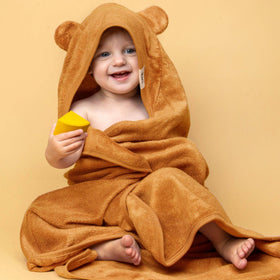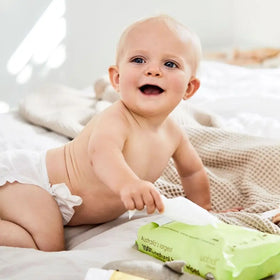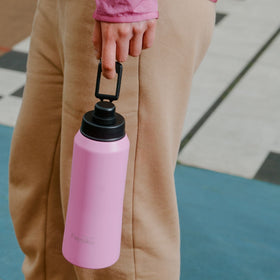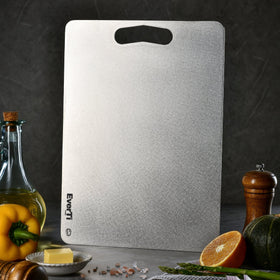
The Pros and Cons of Baby Led Weaning: Should You Try It? Is It Safe?
Baby led weaning (BLW) is a practice that involves sitting babies down with the family at mealtime and letting them have what everyone else is having. No cereals, purees, and mash, just real food cut up into portions that baby can feed himself. Letting a 6 month old feed himself sticks of fruits, veg, and meat seems downright dangerous, doesn’t it?
Yet more and more parents are shifting from starting solids with pureed foods to baby led weaning.
But is baby led weaning safe? Is it worth the mess or the worry that bub could choke on a broccoli floret? Let’s go through some of the pros and cons of baby led weaning.

First, what is baby led weaning?
The basic premise of baby led weaning is that by the time babies are ready for solids (at 6 months or older), they are actually physically able to eat finger foods. This means there’s no need to go through the puree stage.
Instead of feeding your baby rice cereal from a spoon, you just give her what the rest of the family is having and let her get on with it. This will, of course, result in a catastrophic mess, especially at the beginning, but some parents report that the benefits are well worth the effort.
Baby led weaning pros and cons
The advantages
- It’s a great way to introduce the different looks, flavours, smells, and textures of food. This helps children become more adventurous with their food choices later in life and may help decrease the risk of them becoming picky eaters.
- It helps babies develop dexterity, hand eye coordination, and fine motor skills.
- It can offer baby a more balanced meal. With BLW, the whole family shares a meal consisting of different dishes. With traditional spoon feeding, baby will sometimes consume just one specific food per meal.
- It teaches appetite control. Baby feeds himself and therefore learns to recognise when he has had enough. Learning to eat according to his appetite could mean that he’ll be less likely to overeat when he’s older.
- It’s cheaper. Because bub is eating the same food as the family, there’s no need to buy prepackaged baby foods or the equipment needed to make purees.
- It gets parents to be more present at mealtime. Because everyone is eating at the same time and at the same table, parents are more involved and baby gets to be a part of family meals from the start. It also lets parents model mealtime behaviour and lets bub observe the table manners shown by the family.
- It eliminates the mealtime power struggle. Baby led weaning is all about respecting bub’s decisions on what and how much to eat. This helps avoid the coercing, begging, and stress that often accompany family meals.
The disadvantages
- The worry that bub will choke on her food. Before starting BLW, you need to be able to recognise the difference between gagging (common when infants start solids) and choking (requires intervention).
- The epic mess.
- It can be a waste of food and money. In the beginning, much of the food will end up on the floor and the walls. The good news is that as soon as bub learns to pick up smaller pieces of food (at around 9 months), mealtime won’t be as messy.
- It can be a waste of time. All that post meal cleanup! Tip: spread newspaper under the high chair and invest in good bibs. (Or you could do what I did, and just let the dog clean up!)
So there you go. If you want to learn more about baby led weaning, stay tuned for the rest of our BLW series. And for affordable, adorable, and eco friendly baby feeding tools, hop on to Hello Charlie.
Last but not least, before you attempt baby led weaning, please consult your health professional, especially if your child has digestive problems or special needs. Good luck and happy feeding!










